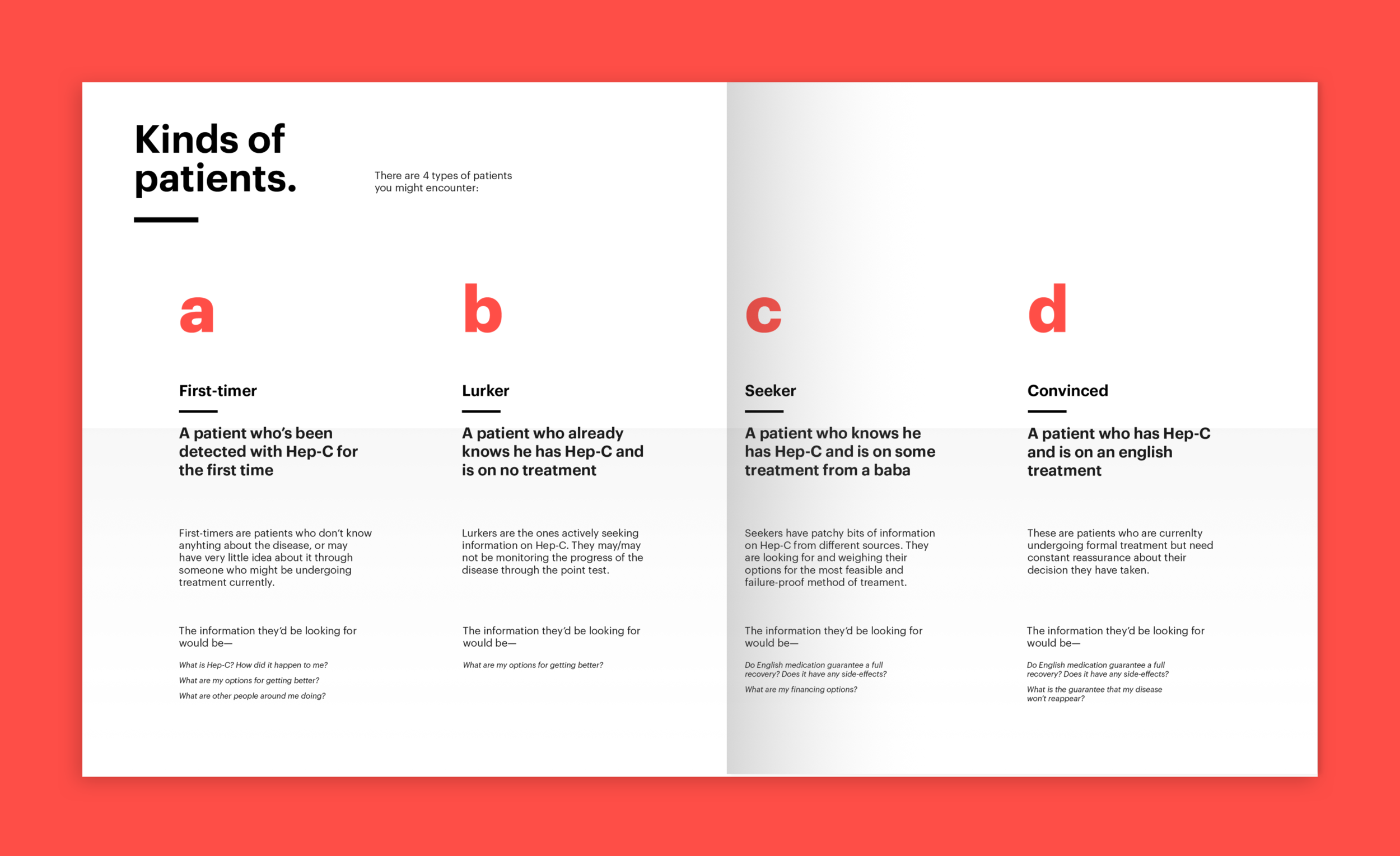
Kaala Peeliya
Tackling widespread Hepatitis C in Rural India

Kaala Peeliya: The Silent Killer
in Rural Punjab
Spreading awareness
to tackle Hepatitis C
2017
8 weeks

This project was an ethnographic research and awareness campaign, to deliver long-term sustainable impact towards adoption of hepatitis-C treatment. After a month of launching, a 40% increase was seen in patients reaching out to formal treatment channels to undergo therapy. There also was a rapid increase in patients willing to be routinely screened for early detection of Hepatitis-C.

Context
A vast percentage of the rural population in Punjab, India is afflicted with Hepatitis-C. However, treatment has not been adopted at the same rate. Research by Dr. Reddy’s Labs and other pharmaceutical companies trying to penetrate the market synthesised that the primary reason was the high cost of treatment. However, huge subsidies in treatment costs and introduction of Hepatitis-C treatment loans, were still unable to trigger any noticeable change. Based on the assumption that the treatment’s financial model was the problem, Our initial brief was to design a financing system that would reduce the perceived cost of treatment.

Our enthno-cultural research process uncovered a culture of misinformation, mistrust and confusion that existed around Hepatitis-C.

Patient types and journeys
We determined the various patient personae that emerged from the research, each with their own unique characteristics and level of conviction and confidence toward being treated. These personae were also distributed to influencers at health camps, clinics and local quacks.
The key challenge emerged as a need to build an information and trust network, instead of the hypothesised financing system. It was also evident that effective grass-root level communication was needed for the company’s offering to become relevant in this ecosystem.


A system of social nudges
A three-step strategy was devised: Firstly, to establish a richer vocabulary for conversations around Hepatitis-C within the local community. Secondly, was to guide the flow of patients towards formal treatment. And the last was to sustain their trust in the formal medical system.

Communication
A handbook which outlined the details of the disease and its symptoms was made and given to local influencers, including governing bodies, money lenders, and RO water stations. A series of awareness posters were also created to initiate engagement, and placed at strategic locations where people congregated naturally, like the water stations, and Chai shops.


Team
Nishita Gill
Ashis Panday
Shreya Toshniwal
Awards
Core 77 Design Awards — Winner
Research & Strategy
Lexus Design Awards 2018 — Finalist Design thinking